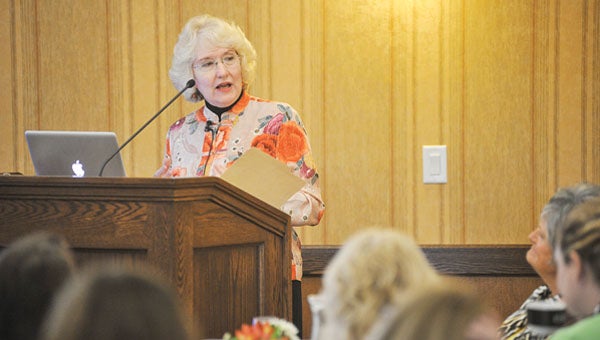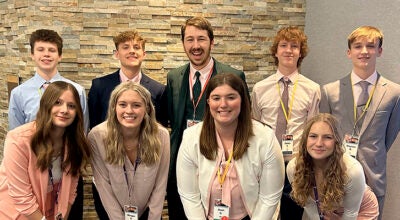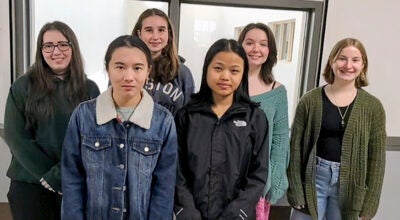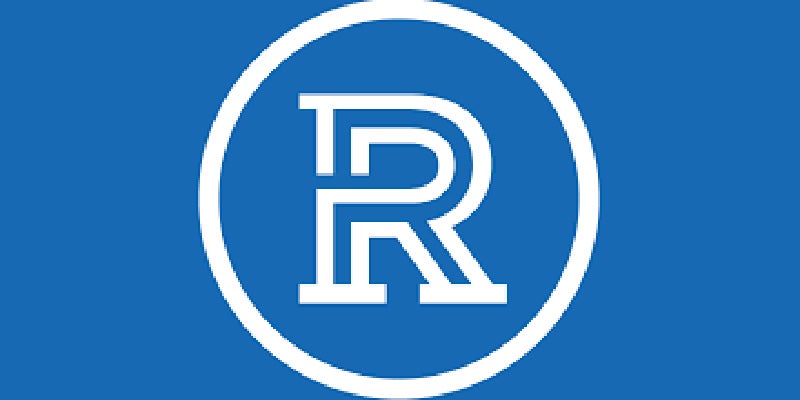Foundation continues symposium support
Published 8:08 am Thursday, June 16, 2011

Dr. Ann Robinson, President of the National Association for Gifted Children, speaks at a dinner Wednesday night, advocating gifted and talented programs.
Though the third annual Gifted and Talented Symposium will end Thursday, the work started here in Austin will continue.
GTS coordinator Wendy Behrens announced Wednesday night that the Hormel Foundation, which funds the symposium, will continue supporting the GTS through 2014. That’s good news to the state and national experts who attended this year.
“The right people are in the room,” said Dr. Ann Robinson, president of the National Association of Gifted Children. Robinson presented her case for advocating for GT programs nationwide Wednesday night at the Hormel Historic Home.
According to Robinson, it’s rare for symposiums like the one in Austin to have so many experts discussing the state of gifted and talented programs. She was even more impressed that the GTS was a collaboration between Austin Public Schools, Riverland Community College, the Hormel Foundation, the Minnesota Department of Education and more organizations.
“That’s not common,” she said.
The amount of sessions at the symposium was astounding, and the material intense and interesting. People like Bonnie Cramond, a University of Georgia professor in Educational Psychology and the director of the Torrance Center for Creativity and Talent Development, were there presenting on ideas ranging from the mindset of a gifted and talented student to using interactive fantasy games to teach mythology.
Cramond brought the fantasy game presentation to the symposium, ready to explain how in the early ‘80s she used a barebones version of Dungeons and Dragons to get middle school students to work together and absorb the material in a different way.
Cramond split the students into groups, introduced the game and got them started on an adventure based on the 12 labors of Hercules. She didn’t make students read about Hercules beforehand, however. She simply set the textbooks on a shelf, which students eventually discovered. To Cramond’s delight, the students read the myths in order to gain an advantage in the game, figuring out what they needed to do to pass.
“They thought they were tricking me,” she said with a smile.
By the time the mythology unit ended, Cramond’s students, sixth, seventh and eighth-graders, all had played another unit based on Jason and the Argonauts, designed their own adventures based on Norse, Egyptian and Japanese mythology and played each other’s campaigns. What seemed to be a simple game turned into a lesson in teamwork, creativity and classical mythology.
“I love encouraging that type of open-ended creativity,” Cramond said.
It’s programs and units like Cramonds that Robinson hopes becomes more of an emphasis in education discussions. Robinson spent much of her time Wednesday night speaking about the perception that gifted and talented students could help themselves, but in reality weren’t getting nearly as much attention as struggling students when lawmakers set the current No Child Left Behind standards. She told a room full of educators about scholar Tom Loveless’s study of high achieving students in 2008, which showed that while struggling students were making academic gains by leaps and bounds between 2000 and 2007,GT students’ academic achievement was “languid.”
“These kids tend not to be an emergency resuscitation case,” Robinson said.
That’s why Robinson thinks more businesses like Hormel are contributing to education, specifically in GT programming. These companies are in need of future engineers, scientists and mathematicians which they want ready for the workforce, according to Robinson.
By all accounts, work being done at places like the GTS is being noticed. National legislation is being made to encourage and oversee GT programming, and bills like the TALENT Act, a bipartisan bill in Congress that seeks to get assessment and accountability programs in place, emphasize classroom programs with supporting evidence to back it up, focus on underserved students and create more research on GT students, are making legislative waves.
That’s good news for educators like Robinson, who told her audience to be ready with solutions when the economy gets back on track and school districts get better budgets.
“Be ready to take the field,” she said.





